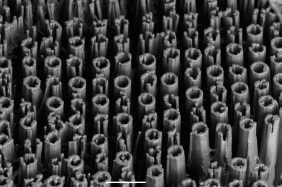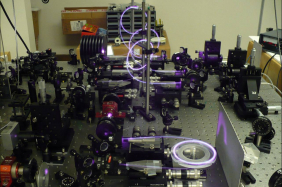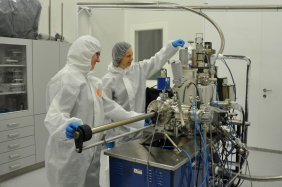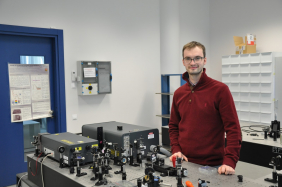Science
- Home
- Science
- Excellence
- Photonic and Laser Technology
-
Excellence
- Advanced materials and technologies
- Surface chemistry and nanotechnology
- Photonic and Laser Technology
- Metrology and measurement technology
- Environmental Research and energetics
- Organic materials and nanoenginering
- Electrochemical energy conversion technologies
- Research of the structure and composition of solid materials
- Long-Term Programs
- Scientific publications
- Conferences
- Projects
Photonic and Laser Technology
The activities of the Centre are tightly connected to Smart specialization Priority “Photonics and Laser Technology” tasks. At the Laser Technology Department of the Centre ultrashort pulse lasers and laser technology equipment are investigated, and the manufacturing technologies of novel optical and optomechanical components are developed. Unique methods for materials processing with lasers as well as multilayer and nanostructured optical coatings for high power ultrafast lasers are created in the laboratories of the Department.
The Department of Optoelectronics focuses scientific activities into two main directions – development of terahertz (THz) technologies and semiconductor nanomaterials engineering:
- The first one is dedicated to innovations in THz imaging and spectroscopic systems aiming to reduce their size, for design and fabrication of diffractive optics elements and their integration with optical sensors in a single semiconductor chip, modulation of high-frequencies using GaN-based nanostructures. A special attention gains quantum optoelectronics topic where efforts are spotlighted to the investigation of semiconductor quantum superlattices as a gain media for high-frequencies for room temperature operation.
- The second direction relies on materials engineering of A3B5 and with special emphasis on GaAsBi-based nanostructures grown by molecular beam epitaxy. Novel semiconductor nanostructures are designed, fabricated and further used for various applications, for instance, for the development of infrared LEDs and lasers as well as novel advanced solar cells. The activities cover also investigation of 2D materials such as several-atom-thick layers of Bismuth (Bi) – bismuthene – and their optical and THz properties.
The Coherent Optics Laboratory analytically and numerically studies structured light, its production, applications, properties, and characterization methods. In the laboratory, designs of photonic elements for structured light are created, photonic elements for certain ranges of electromagnetic waves are produced, applications of structured light for material laser processing, imaging, nanoparticle manipulation, information transfer and more are modelled.
The scientists of the Electronic structure theory laboratory develop numerical quantum mechanical methods to study radiative and non-radiative processes in optoelectronic materials. Another important topic is the study of point defects in solids in view of their application in quantum technologies such as quantum communication and optically controlled quantum bits.
The competence of these methods is gathered:
- Department of Laser Technologies (Head dr. G. Račiukaitis),
- Department of Optoelectronics (Head prof. G. Valušis),
- Coherent Optics Laboratory (Head dr. S. Orlovas)
- Electronic Structure Theory Laboratory (Head dr. L. Razinkovas)



